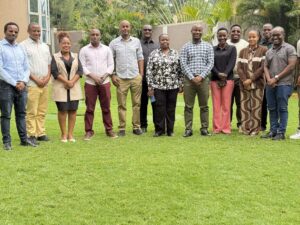From January 27 to 28, 2025, the UDSM DHIS2 Lab participated in a multi-stakeholder technical meeting aimed at exploring the integration of climate data with malaria surveillance systems. The meeting brought together experts from ALMA, NMCP, TMA, HISP Tanzania, and IHI to discuss leveraging climate data for malaria prediction, addressing gaps in data accessibility, and developing a unified platform for informed decision-making.
During the session, the UDSM DHIS2 Lab showcased its implementation of the DHIS2 Prediction App, integrated with the CHAP Application (Climate Health Analytics Platform) and existing malaria surveillance data from EIDSR. This integration enables the prediction of malaria occurrences based on key climatic factors, including precipitation, temperature, and humidity. Additionally, the Lab presented its proposed system architecture, which links EIDSR and HMIS data to enhance malaria prediction and analysis capabilities.
Key outcomes of the meeting included recommendations for system architecture, enhanced stakeholder collaboration, and the digitization of meteorological data to strengthen malaria control strategies.
The discussions underscored the importance of cross-sector partnerships in advancing data-driven malaria interventions.



